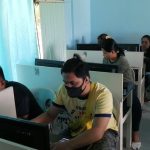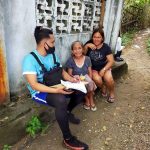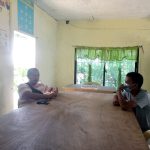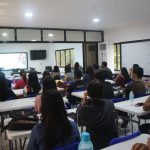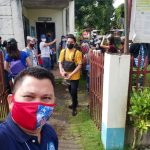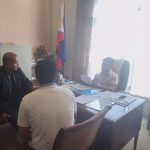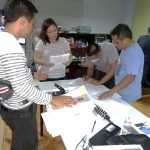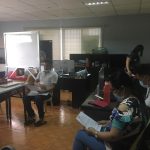
Language Description Documentation
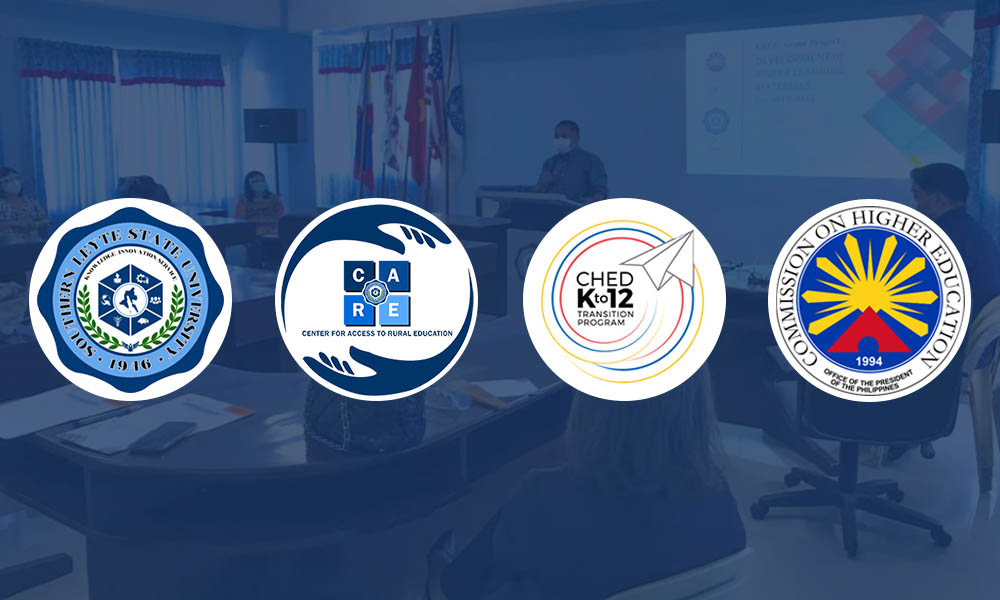
Papers
For Editing and Compliance with Experts’ Suggestions.
Study Proposal 1
Orthography Development of Southern Leyte Language: Basis for the
Creation of MTB-MLE Learning Materials
Tibus, E. D.
Abstract
The language of a particular place is given a name, which makes it easier to maintain and develop the language in a specific area. The language name also provides a basis for phonology, morphology, syntax, semantics, and orthography. The research is crucial because it is necessary to (a) confirm the name that refers to the Southern Leyte language and (b) determine the orthography of the existing language intermixed in the multilingual environment of Southern Leyte. The data collection employed an Elicitations Approach whose participants are randomly selected from 10 percent of the total population for the three age groups 15-40, 41-60, and 61-above. The results revealed that the name of the Southern Leyte language based on the collated data is called Southern Leyte Bisaya.
Moreover, there are three vowels and 15 consonants of this language that are used in verbal conversations of the native speakers of this province. Besides, there were initially 20 rules developed based on the data collected through the approach used. These preliminary data serve as good discussion points for language policymakers and all stakeholders in the province for creating learning materials essential for the success of the MTB-MLE program implementation. As a recommendation, all the domains that are an aspect of the people’s everyday lives in Southern Leyte be captured in the subsequent studies to contribute to and expand the Southern Leyte Bisaya language corpora. The data would serve as the basis for the progressive language planning and policy of the entire province.
Introduction
One of the fascinating and complex behaviors among humans is the development of language. It is a critical part of child development. One important reason why language development is so remarkable is that children are never directly taught it, but mainly through constant immersion in a linguistic environment where the language is consistently used. Language development promotes the child’s ability to communicate and understand emotions, encourage thinking and problem-solving, and develop and maintain a relationship. Thus, the enjoyment through active use of language serves as the critical first step in literacy.
The essential parts of language development which every child undergoes include phonology, morphology, semantics, syntax, and pragmatics. Orthography, an integral part of language development, is largely concerned with matters of spelling and in particular the relationship between phonemes and graphemes in a language (Seindenberg, 1992; Donohue, 2007). It is essentially relevant in language development since it affects a child’s acquisition of literacy skills (Thorstad, 1991). Hence, orthography needs to be acquired or learned by children while they are learning their first language (L1) especially that spellings correspond to historical rather than present-day pronunciation (Khalilzadeh, 2014). Moreover, Thorstad (1991) believed that if the orthography is predictable and invariant, the children use a systematic, phonological strategy and learn to produce the sounds, read, and spell words more quickly and accurately.
This study investigates the orthography of the existing language used by the inhabitants in the province of Southern Leyte. The research is deemed important because only if sufficient and varied resources are available for reading and instruction will literacy be effective. However, identifying the orthography in the Southern Leyte language is a great challenge since the language being studied might be considered an endangered language since the original language is already combined in the multilingual environment. Besides, a contact language already exists in a written form and is used for formal contexts of writing which is used in the teaching of MTB-MLE. Lupke (2015) stressed the need to define an ecological niche for writing in the endangered language, that is, registers and contexts that are predisposed to writing in it rather than in a contact language.
In the context of the K-12 curriculum in the province of Southern Leyte, there exist some issues regarding the use of learning materials in the mother tongue instruction, such as the provision of learner’s learning materials, class size, materials’ preparation, dearth of suitably qualified teachers, and adequate appropriate training (Dio & Jamora, 2014; Gacheche, 2010; Singh, 2014; Wa-Mbaleka, 2014). Others argued that children do not understand some of the words and phrases, including their spelling and pronunciation, because they are different from what is utilized in the child’s speech community (Hasselbring & Phil, n.d.). Meanwhile, others complained about the undesirability of the utilization of the mother tongue in some situations (Fóris-Ferenczi & Bakk-Miklósi, 2011; Sanchez, 2013), one is the little use of mother tongue when it is already a declining language. Additionally, there is a haphazard implementation (Obiero, 2010) and the belief that English is the superior language (Khosa, 2012; Mahboob & Cruz, 2013) because there are concerns that it may impair the quality of English (Jha, 2013). Moreover, in his study, Medilo (2016) shared the emerging challenges of Southern Leyte MTB-MLE implementers, such as the use of more than one vernacular as a medium of instruction in communication development, commitment to being globally competitive, limited applicability due to the superiority of English and inadequate materials, burden caused by the complexity of the vernacular, and optimism in accepting the responsibility.
Thus, this study specifically focuses on the orthography of the language used in Southern Leyte with the use of the Linguistic Documentation Description (LDD) corpora of Leupke (2009).
Study Proposal 2
Syntactic Description of Southern Leyte Bisaya
Bendulo, H. O.
Abstract
Introduction
Southern Leyte Bisaya is the native tongue or the local language of 421,750 people in Southern Leyte (2015 PSA Census). This paper uses Bisaya, although, other names for this language variety exist like “Binisaya”, “Bisaja”, “Binisaja”, and “Kana”. This name preference is supported by the result of an initial survey involving 590 native speakers and residents of Southern Leyte, which reported that 60% of the respondents named their native tongue as “Bisaya”. However, in the broader context, Bisaya is considered as a generic reference to the different dialects of the Visayan region. such as Waray waray, Leytenyo, Hiligaynon, among others (Villalobos,____). Southern Leyte Bisaya is a dialect of Cebuano Visayan, which is one of the major languages in the Philippines, and this language variety poses distinct linguistic properties and features different from the Cebuano. This contention is raised with substantial confirmations or commonly heard verbal expressions like “ninja ray mupatay ninju”, an expression typically associated to Southern Leyte Bisaya speakers. Ethnologue’s (Lewis, 2009) perspective, Boholano is somehow considered a separate from the Cebuano language; a contention that strengthens that the Binisaya spoken in Southern Leyte is likewise distinct from the Cebuano language, therefore setting the context for this current study.
The implementation of the Mother-tongue based multi-lingual education program of the department of Education has ushered in the need for studies relating to local languages. Currently, the learners in Southern Leyte and in some parts of Leyte who are speaking Binisaya are introduced to Sinugbuanong Binisaya as the mother-tongue in the MTB-MLE program, specifically as reflected in the prescribed textbooks. The use of this Sinugbuanong Binisaya causes increasing comments on the difficulty of the language as perceived by the pupils, the parents, and even the teachers. This concern needs to be responded to not only by DepEd, but also by Higher education institutions, especially for the teacher education institutions offering Elementary education courses.
There had been linguistic studies conducted and published about Cebuano language and other typologically-related languages, like Surigaonon, Butuanon, Boholano, and others. Endriga (2010) worked on the dialectology of Cebuano spoken in the provinces of Bohol, Cebu and Davao; Maxilom ( ___) investigated on the semantic change of selected Cebuano words; Bautista (2015) on the written grammars and researches on South Bisayan languages (i.e. Cebuano, Tausug, Surigaonon, Butuanon) from 1900 until present; Dumanig ( 2015) which describes the Surigaonon language; Liwanag (2017) on community-based descriptive orthography of Surigaonon; and Borong (2019) morphological variations of the dialect of Western and Southern Leytenos. The quantity of these studies tell that there is still a great need for linguistic studies regarding the Binisaya language, along with the typologically-related languages, like the Southern Leyte Binisaya.
Since the demand for language reference materials had been highly recognized, especially those focused on minor languages as premised from the implemetation of the MTB-MLE program, the focus of this investigation is of great significance and of high educational value as salient inputs for language planning and policy program. This study is a part of a language description project concerning Southern Leyte Binisaya. This, however, will only focus on the syntactic structure of the Binisaya as spoken by the Southern Leyte speakers. The main objective of this study is to describe the language’s Syntactic Categories (Phrasal – NP, VP, PP, etc, Lexical- verb, Noun, Adj, etc; , functional – Auxiliary, determiners ); Phrase Structures; and Transformational Processes.
Study Proposal 3
Phonological Features of Bisaja Variety of Cebuano
Aňavesa, JM
Abstract
1.0 Introduction
Ethnologue (2021) reports that there are now 7,139 living languages spoken around the planet. Constantino (1968), cited by Paz (1981) records more than 300 languages and dialects in the Philippines. Of these languages and dialects, only180+ Philippine languages and dialects have been studied and documented, according to Ethnologue.
Several linguists have studied the Cebuano language spoken in Mindanao and Cebu, including those of Wolff (1962, 1972); Bunye and Yap (1971a, 1971b); Trosdal (1990, 1992); Tanangkingsing (2005, 2007, 2009, 2013); and Pesirla (2012). However, the Bisaja dialect, which is spoken by nearly 500 thousand people in Southern Leyte, has never been studied, which is why this research is conducted.
This research is part of a larger project to describe and document the province’s dialect. This study focuses on the dialect’s phonological characteristics in particular.
1.1 General Information about Southern Leyte
Southern Leyte is one of the six provinces of Region VIII (Eastern Visayas), and is situated on the island of Leyte’s southernmost tip. It is bordered on the north by Leyte, the Pacific Ocean on the east, the Mindanao Sea on the south, and the Visayas Sea and Canigao Channel on the west. The province has 18 municipalities, 1 city with 500 barangays and 4 islands – Panaon, Limasawa, San Pedro and San Pablo. Its capital is Maasin, which also houses the Provincial Governor’s office. Limasawa, an island to the south where the first Roman Catholic Mass was conducted and considered the birthplace of Roman Catholicism in the Philippines, is located in southern Leyte. The province ranks second least populated in the region. The province has a population of 421,750 people, according to the 2015 census.
Animist Visayan ethnic groups from Bohol are thought to have inhabited the region that would become Southern Leyte. Bisaya or Boholano, a Cebuano version, is the native tongue. English and, to a lesser degree, Spanish and Filipino are also spoken by natives (Wikipedia.org).
Study Proposal 4
Morphological Structure of Southern Leyteño Binisaya
Carbonilla, G. B.
Lacerna, R. L.
Abstract
Introduction
“whole rest – tibook nga pahuway”
“Half-rest – katunga nga pahuway”
The statement mentioned above is the actual experience of the researcher as a mother of a grader learner. This is one of the lessons in Music subject that is translated into mother tongue of the learner in one of the schools in Southern Leyte. The translation from English to Bisaya as mother tongue of the word “rest to pahuway” seems ridiculous because the term “pahuway” refers pause of work; freedom from labor or activity; or state of motionless or inactivity (Merriam). In music, rest is a pause or interval of silence equal in duration to two half rests or one half of a breve rest (https://yourdictionary.com).
In this context, the translation of the term to Bisaya mother tongue language is not exactly what it mean. Thus, the development of dictionary of Southern Leyte Binisaya deemed necessary to address the issue concerning the contextualization and understanding of the learners of the terms.
Language is at the heart of all things humanity, it is part of the social structure of our communities and is the vehicle for literature and communication. Language, therefore, is not just a part of us. Language defines us (Alas, 2020).
Consul (2014) pointed out that language binds people together and sets them apart as a distinct social group. Each language has grown up with its society so that it embodies and expresses the facets of its people’s culture and way of life.
Azoulay et al., (2018, in Borong, 2019) emphasized that language was far more than a means of communication for it was the very condition of our humanity where our values, beliefs and identity were embedded.
In the Philippines, Filipinos use varied lingua francas because the country is composed of several linguistic ethnicities. May you be from Luzon, Visayas and Mindanao, you may become part of the 170 diverse language speakers of the country, and there are 5000 languages spoken in the entire world today. Yet, according to current estimates, only one-tenth of today’s languages will remain by the coming of the 22nd century (Bucjan, 2018).
According to Constantino (1998, in Dumanig, 2015), Philippines is a multilingual and multicultural country, consisting of 165 language and dialects and out this number there are eight major languages. These languages are Tagalog, Ilocano, Bicol, Kapampangan, Pangasinense, Cebuano, Hiligaynon and Waray. Most minor languages are not explored up to this time.
Southern Leyte is one of the provinces found in the Western part of Leyte using the Visayan dialect which is almost identical of Cebuano in Cebu. People of Southern Leyte called its dialect as Bisaya or Binisaya as they call it. Southern Leyte province has a population of more than 400 thousand (2015 PSA census of population) and majority of them using the Southern Leyte Binisaya or Bisaya dialect. The Southern Leyte dialect is greatly influenced by the nearby provinces primarily like Cebu and Bohol. Southern Leyteño Bisaya is a dialect which has intelligibility concerns.
Like any other language, a Southern Leyteño Bisaya word is made up of morphemes. The morpheme can be a whole word such as kuha (get), or an affix to be added to a base such as the prefix gi-(gi + kuha), or a suffix –an (kuha + an). An affix is an addition to the base form of the word to create a new meaning or a new word (Borello). In Cebuano Visayan language, affixation occurs with nouns, adjectives and verbs (Bunye & Yap, 1971 in Sieras, 2020). Hence, it is a morphosyntactic language; its morphology is complex and is highly involved in the grammaticalization of ideas and concepts.
Bodily and Lonsdale (2014) in Morphologically Parsing the Cebuano Lexicon cited the grammaticalization of the word humility as an example. Humility in Cebuano-Visayan is pagkamapa-inubsanun. This word consists of a root word, ubus (under), and seven nominal affixes, each of which mold the meaning of ubus into the concept of humility.
Similarly, Borello (2018) in English Cebuano Visayan Grammar has enumerated a list of affixes that can be added to the base to form the Cebuano adjectives such as the following: a) Affix ma- to mean very (so and so), like in maalam (wise); b) Circumfix ma- -un is added to form an adjective which means having the characteristic of doing or becoming, like in malipayon (happy); c) Affix on, hon, an, han are added to form adjective indicating moral and physical qualities, like in tabian (talkative); d) Prefix ha- is added at the root to form adjective of distance or degree, like in hata-as; e) Prefix hi- is added for pointing out frequency, like in hinga-on; f) Infix -g- is added after the vowel of the first syllable to an adjective referring to measurements to pluralize referring to more than one thing, like in lagyo (far); g) Prefix maka- and the first syllable of the root is duplicated, like in makahihilu; h) Prefix ma-, with the insertion of infix -in- between the first two syllables, and -on- to the last, creates adjective of quality, like in matinahuron; i) Infix -pa- between ma and the first syllable of the root, and adding on to the last create adjectives of quality, like in palabilabihon; j) Prefix paki- is added to form adjectives denoting “very fond of (such and such)”.
A morpheme is the smallest grammatical unit of meaning such as a prefix, a root word, or a suffix. Morphology then, is the study of the processes by which morphemes combine to form words. Understanding how the words are formed is imperative to such applications as speech recognition, web searches, and corpus searches, which depend on identifying every instance of a word, including all inflected forms (Bodily & Lonsdale, 2014).
Likewise, Consul (2014) stressed that linguistic analysis of the lexical elements of a language reveals that many words have internal morphological structure. Word bases and affixes recur in different words, and, to a degree, bases may be associated with a common core or meaning; for their part, affixes may convey a meaning or may subserve a particular grammatical function.
Sieras (2020) emphasized the morphemic structure of content words reveals that the majority of the Cebuano words are formed by affixations that affect the grammaticalization of ideas and concepts.
With the foregoing discussion, the implementation of the Mother Tongue-Based-Multilingual Education (MTB-MLE) under the K to 12 Basic Education Program has been instigated. Its guidelines are to have additional languages that shall be used as the languages of instruction for Grades 1-3 pupils who speak the same languages in order for them to improve their linguistic competence, and to develop the cognitive skill and to strengthen their socio-cultural awareness. Since the MTB-MLE program matures, there comes a need to refine the lexical, grammatical and orthographic rules of the language being used in the academic setting (De la Cerna , 2017).
These situations contend for the need of a tool that can periodically monitor the state of a language’s development, by observing how it is being used by a population of users. In this paper, it describes the morphological structure of the Southern Leyteño Binisaya language specifically the forms, roots, and affixes.
As the implementation of the MTB-MLE in the first four years of a learner’s education, in the Philippine Education system there was difficulty on both the implementer and the recipient of the program because there is no policy and guidelines in translating the lesson from English to the first language of the learner.
At present, most minor languages are not widely explored. Although there is already a study conducted on the descriptive analysis of Surigaonun language however; the focus was on the vowels, consonants, consonants clusters, diphthong, stress, and the morphophonemic processes such as assimilation, deletion, alternation, and metathesis. Thus this study is undertaken to give details on the linearity of the morphological structure of Southern Leyteño Binisaya.
Alas (2020) mentioned that Surigaonon language has shared linguistic properties with its coastal neighbors in Bohol, Southern part of Leyte, Leyte, and Cebu which created an abundance of language variations. This has required the construction of a standardized Southern Leyteno Binisaya language which can address the need for rules on uniformity in providing written symbols and which shall form the basis for judgment in language use.
Under the K to 12 Program, for example, the contextualization of Surigaonun Mother Tongue Based-Multilingual Education (MTB-MLE) materials is confronted with some morphological and orthographic issues as often complaints of the teachers teaching the subjects, parents, and pupils of said localities. This study is deem important for it will help solve the problem pertaining to crafting policy and guidelines in the use of mother tongue specifically the use of Southern Leyte Binisaya in translating the lessons for the full implementation of MTB-MLE program in all schools in the province. Thus, this study can help the administrators and teachers to come up with materials in the Language of the learners which is Bisaya/Binisaya, in so doing DepEd can offer suited instructional materials for the learners in the province of Southern Leyte.
Activites
Meetings
Researchers’ Meeting for Schedule Finalization
SLSU Tomas Oppus, Care Office
Visit Provincial Governor’s Office and for Permit and Support
Provincial Governor’s Office
Visit DepEd Southern Leyte Office for Support
DepEd Southern Leyte
Send-Off and Final Briefing Program
SLSU Tomas Oppus, Graduate School
Meeting/ Courtesy Call with Mayors and Barangay Captains to request permission to proceed with the Data Collection
Southern Leyte Municipalities
Researchers’ Meeting for Project Progress Assessment
SLSU Tomas Oppus, CARE Office
Virtual evaluation meeting with Dr. Voltaire Oyzon
SLSU Tomas Oppus, CARE Office via ZOOM
Compliance of Suggestion from Evaluators
SLSU Tomas Oppus, CARE Office
Data Collection
Reproduction of Eliciting Materials and Preparation of Research Kits
SLSU Tomas Oppus, Arts and Letters Room
Simulation Activity for Community Immersion of Enumerators And Field Transcribers
San Isidro, Tomas Oppus, Southern Leyte
Language Corpora Collection
Southern Leyte Municipalities targeted
Transcription of Data Collection
SLSU Tomas Oppus
Writeshop
Assessment and Evaluation of Fieldwork Data for the Completion of Language Description and Oral Literature Documentation Studies
Seandy’s Beach Point
Documentation
People Behind
Language Description Documentation Team
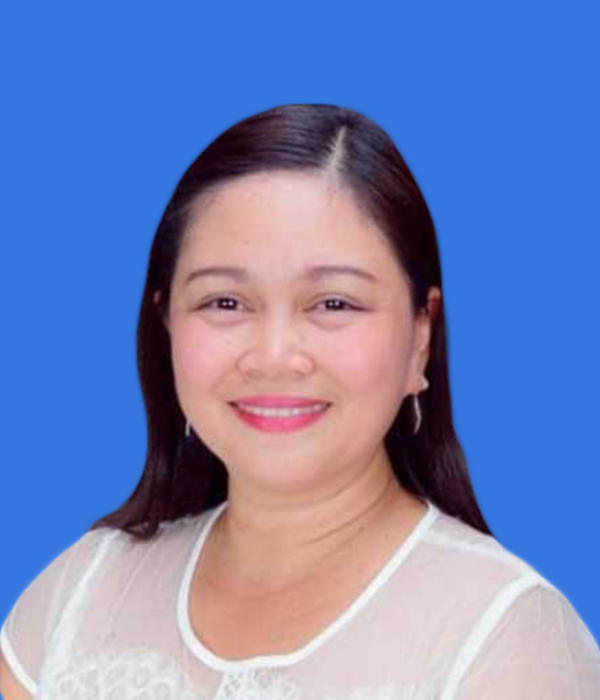
Erlinda D. Tibus
Project Leader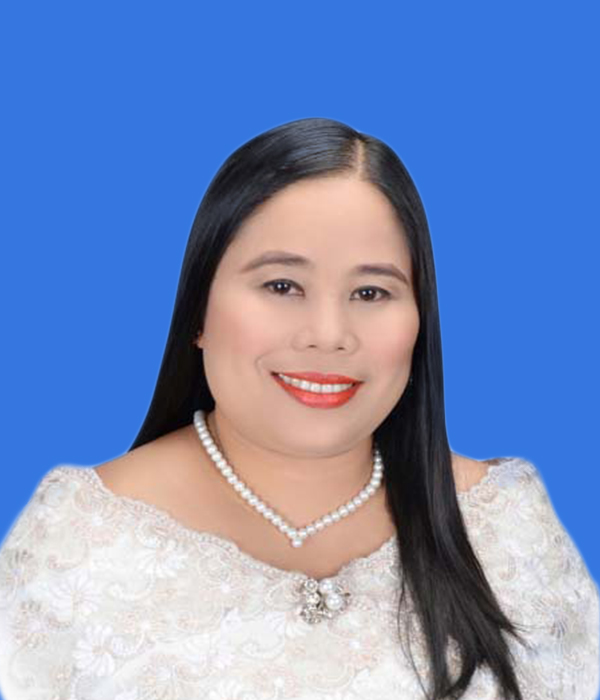
Hermabeth O. Bendulo
Affiliate Researcher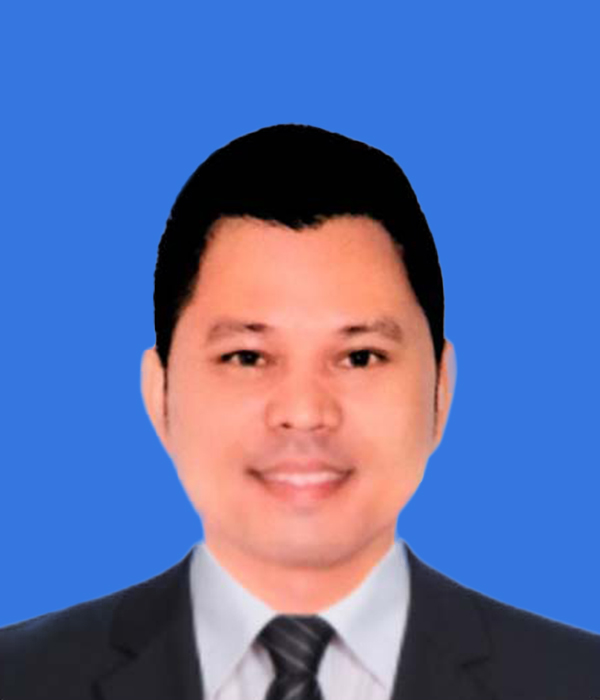
Joseph M. Añavesa
Affiliate Researcher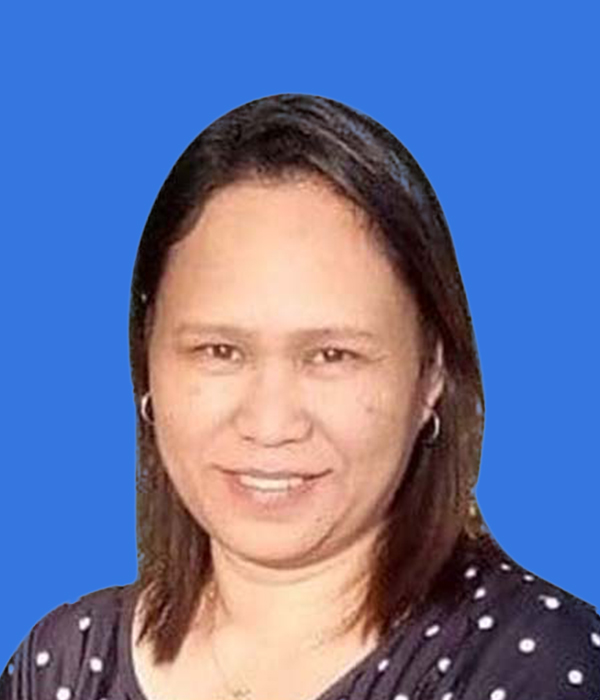
Ginalyn B. Carbonilla
Affiliate Researcher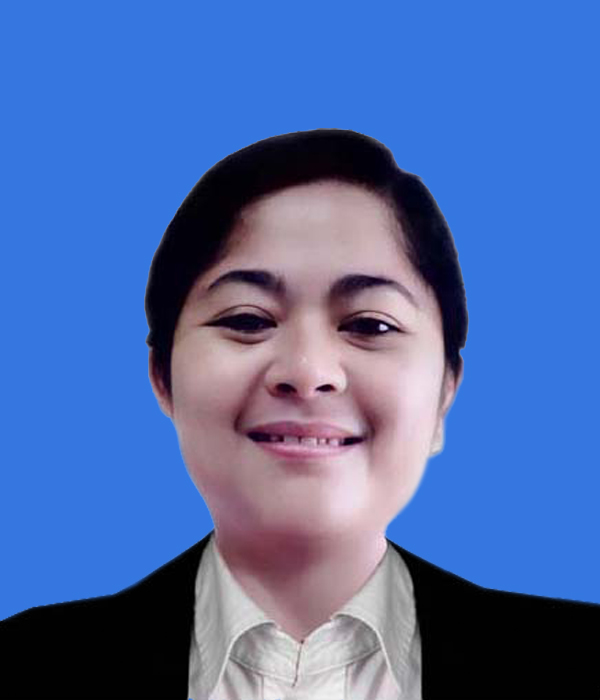
Riza L. Lacerna
Affiliate Researcher
More Projects
Development of Bisaya Learning Materials for Mother Tongue Based Multi-lingual Education
[blocksy_posts post_ids=”699,702″ limit=”3″ has_pagination=”no” order=”ASC”]

